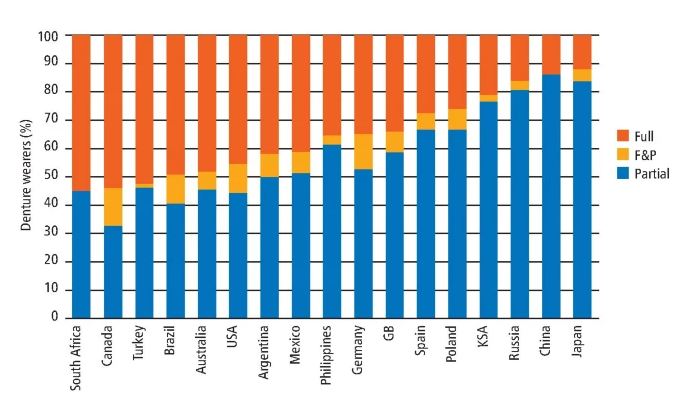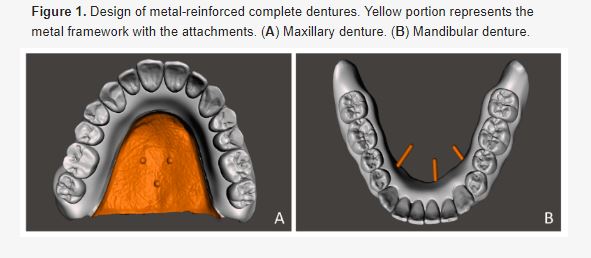Acrylic vs. metal partial dentures: which is better?
Dentures are dental prosthetics that are meant to replace missing teeth. A partial denture is used for patients with natural teeth in the upper or lower jaw.
Partial dentures can be made using different types of material.
Metal dentures are the most common type due to their long-term benefits. Plastic or acrylic dentures are also popular for their ease of use and adjustability.
Acrylic vs. Metal Partial Dentures
Let us compare acrylic and metal partial dentures on 5 specific grounds:
- Fitness within the mouth
- Appearance
- Expansion
- Durability
- Pricing
1. Fit
Metal dentures use metal clasps that attach to the remaining teeth.
A partial denture with a metal base is generally smaller than an acrylic denture. The thin material of metal dentures also allows them to be less bulky.
Metal dentures offer a better fit that can settle comfortably in your mouth. That is why a higher number of denture wearers are happy with them.
Since acrylic is a brittle material, it must be thick enough to strengthen the denture. Acrylic dentures can feel bulky because they need to cover more teeth and gums.
Acrylic dentures are not as comfortable as metal dentures.
Many wearers attest that metal partial dentures feel the most natural to wear.
Also Read: Before and After Dentures: A Must-Read Feature
2. Appearance
Metal partial dentures are made of high-quality materials matching the color of the remaining teeth. That is why they fit seamlessly with your mouth.
Acrylic dentures also produce a smooth look that blends well with the remaining natural teeth.
However, acrylic dentures need constant maintenance to be in good condition.
Both metal and acrylic dentures can give natural-looking teeth, but metal dentures are considerably easier to maintain.

3. Expansion
Manufacturing metal dentures alone can take a long time. Replacing or adding more teeth needs welding to fit perfectly into the framework.
Further adjustments must be made for the base to sit comfortably in the mouth.
Adding new teeth or expanding the denture base with acrylic partial dentures is easier in case of future tooth loss.
Opting for acrylic dentures can save time and money if new teeth are needed.
4. Durability
Metal partial dentures are the preferred long-term solution to tooth loss. Most are made of cobalt chrome, which is strong yet light enough not to cover gums.
Innovative technologies today allow for metal partial dentures to be digitally designed to be less brittle.
In contrast, plastic or acrylic partial dentures tend to wear down quickly. They need extra cleaning and care to prevent breakage and gum damage.
Acrylic partial dentures must be replaced every five years.
In terms of longevity, a metal denture can last much longer with less maintenance than a plastic denture.

5. Pricing
Acrylic or plastic dentures are significantly more affordable than metal dentures.
Most metal fixtures are made from cobalt chrome, a rather expensive material. The fabrication requires greater skill and time, which adds to the cost.
It can rise to 75% more than the cost of acrylic dentures.
Acrylic dentures are a more accessible option for a wider range of patients.
Also Read: Premium Dentures: What Are They?
Acrylic vs. Metal Partial Dentures: Final Verdict
Both metal and acrylic partial dentures have their strengths and weaknesses.
Metal partial dentures can provide long-term support, better fit, and durability but are quite pricey compared to acrylic dentures.
On the other hand, acrylic partial dentures are a more economical choice that allows for future expansion. However, it’s bulky and requires proper maintenance to last.
Overall, metal dentures are a better choice as they offer greater benefits in the long run. However, medical research shows there is no significant difference between them.
Conclusion
At least 32% are embarrassed about wearing dentures. That is why choosing the right kind of denture that suits you and your lifestyle is important.
Invest in a high-quality prosthetic that gives great fit, appearance, and durability at a reasonable price.
Consult your dentist to find the most suitable denture available to you.
According to BioMed Research International, removable partial dentures have 3 main objectives: 1. Replace the missing teeth 2. Support the facial structure 3. Stop further tooth loss. They are still considered a cost-effective treatment option for those missing half of their teeth.
Metal-base (MB) dentures are biocompatible. They do not fracture under pressure. Besides, they offer a natural feeling inside the mouth, as they are narrow and do not come in contact with muscle forces.
References:
Shaha, M. et al. Understanding the impact of removable partial dentures on patients’ lives and their attitudes to oral care. British Dental Journal. 2021.
Almufleh, B. et al. Patient-Reported Outcomes of Metal and Acrylic Resin Removable Partial Dentures: A Systematic Review and Meta-Analysis. Journal of Prosthodontics. Volume29, Issue5. June 2020. Pages 378-386.
Piao, X. et al. Fabrication of Metal-Reinforced Complete Dentures Using the CAD-CAM Technique. Applied Sciences. 2021, 11(16), 7369.
Poštić, S. Design of Complete Denture Reinforced with Metal Base. Serbian Dental Journal, vol. 60, No 1, 2013.
Also from SupreDent:
How to Remove Denture Adhesive
